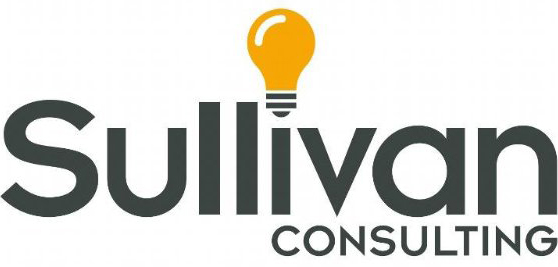
How Is your Corporate Fundraising Doing?
Are you leaving money on the table? Have you really researched the right companies for your cause or event and determined the best strategy, right department, and person to go to with your corporate fundraising request? There are many different pockets of money available to non-profits from corporations. You just need to understand the pockets and which one is right for your opportunity.
Community Affairs
Community Affairs is the pocket most non-profits think of first. In large corporations there is usually a community affairs staff person and a budget assigned to that department. Most corporations now have a strategy for their giving that aligns with their corporate goals. For example, a health insurance company will want to fund initiatives that promote a healthy life style. Banks like to fund financial literacy programs. Generally, you may ask for funds in the range of $1000 to $20,000. In some corporations, an individual makes the decision. In other organizations, there is a committee that reviews the process. Community Affairs departments may or may not also look at sponsorship opportunities. Budgets for the following fiscal year are usually finishing up late August to October so make sure to think that way when asking for amounts $5,000 and above. Ideally you want to be a position where you are annually part of their budget. This takes time and relationship building. Your organization becomes a partner and provides value to that for-profit whether it is through association with your brand, giving their brand exposure as a good corporate citizen, or by providing meaningful volunteer opportunities to their employees enhancing their employee satisfaction.
Foundations
Foundations will generally consider larger asks and like corporations will have guidelines on what they fund. Foundation asks are generally in the range of $5000 and upwards of $250,000. The Foundation is a non-profit with a separate tax status. You can research foundations for free at GuideStar.org. GuideStar publishes 990 forms of organizations that will include the foundation’s assets, how much money they gave away in each year; who serves on the board of directors, and the amounts of money they gave to whom. This will help you determine if you are asking too much or too little. Foundations also generally have web sites that will explain their guidelines and deadlines. I advise clients to never apply blindly for a grant. It is best to get in the door and meet a grant or program officer and then, to be invited to apply. Finding a good program officer is like finding gold. It is their job to guide you and let you know if your organization meets its criteria and if so how to best present your case. They can serve as your advocate. Some foundations are closely aligned with their companies and others are separate. Foundations do not give to sponsorships. Many do not give to capital campaigns or provide operating revenue. Some, however do. They will want information on your budget and expected outcomes. The money they provide will be restricted to that cause and cannot be spent otherwise.
Marketing Budgets
The marketing department is often overlooked is the marketing department. Marketing departments are interested in sponsorships if you have the right information on your audience, reach and demographics. The buzz word right now for marketing folks is brand activation. They want their brand in front of the audience. That often means a presence at the event or during the course of the sponsorship. For a car manufacturer, it is putting a car out front of the building. For a food manufacturer it might be serving their food. A hospital may want to provide screenings. I advise my clients to develop a prospectus for companies. What does your brand stand for? Who do you reach in terms of age, income, and other psychographic and demographic data? They are looking to see if aligning with your brand will have a good and measurable return on investment for them. They will want to measure results.
Individual Department Budgets
You may lose out in your corporate fundraising from community affairs and overall marketing pockets of money, but in larger firms and educational institutions there are sometimes separate funds available within departments. These funds get free when someone from that area is on your board or a committee. CEO’s have a discretionary budget and quite a say. Government Affairs has a budget.
So Where Do You Start?
There are a number of ways to improve your corporate fundraising:
• What organizations have supported you in the past? Go through old records. Look at your donor database.
• Who is supporting organizations with causes like yours? Review their annual reports to see who is giving and how much. Look them up. Do some research.
• Visit the library and research the Foundation Center Database. You can also pay for a subscription to research the database on an ongoing basis.
• Subscribe for a month to NOZA and you can search their database by subject area for individuals and organizations giving to certain causes such as education. Noza is a great research tool.
• Look for individual names on Linked In for the organizations. You can search for community affairs titles within a company or geographically.
Once you have the organization and the right person, ask for an introductory meeting. Go prepared, but be prepared to listen first. Ask them to tell you about their philanthropic efforts and interests. Let what they tell you guide your conversation and what you present. Know your organization’s opportunities as well as your outcomes, impacts, and who you reach. When you calculate ‘reach’ include things like traffic counts in and outside of your building, Facebook followers, website unique hits, Instagram, media mentions and anything else that comes to mind.
Do not expect an instant ‘yes’ the first time you meet. You may have to visit a few times or follow up periodically. The organization may want to have a seat on your board or a key volunteer position. Add key contacts to your newsletter and communications list and keep courting them.
And remember, it’s not over once you get the funds. You need to report back. Organizations want a report regardless of the type of funds given. If they were recognized send samples. Report on the outcomes, provide testimonials. Send photos or whatever you can to prove the money was well invested. Your goal is an ongoing, mutually beneficial relationship. Good luck with your corporate fundraising.

Recent Comments